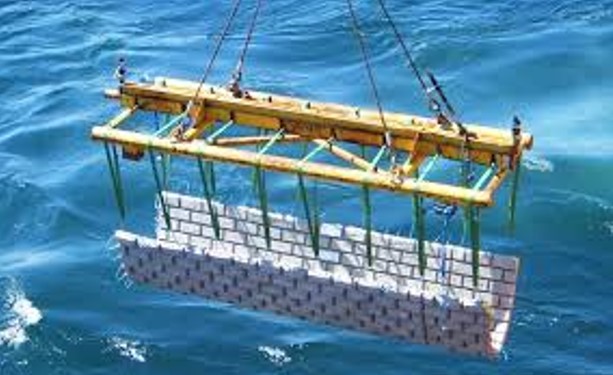Damage to bulwarks during overboarding of mattresses
What happened
During the overboarding of a mattress stack (3x 150mm mattresses) using a mattress frame, the mattresses made contact with the port side bulwarks causing damage. Before and during the lift, the weather conditions were suitable for the operation.
As the load was lifted outboard, a swell caused vessel motion which led to a pendulum effect on the mattresses. The mattresses then hit the port side bulwarks causing damage. No-one was injured.
What was the cause?
The immediate cause of the damage was that the mattress stack made contact with the port side bulwarks during vessel motion due to swell as the load was overboarded.
What went right?
The operation was conducted within defined parameters, all pre-lift planning activities were completed, tag lines for initial overboarding were used and safe personnel positioning was observed.

What was the cause?
The immediate cause of the damage was that the mattress stack made contact with the port side bulwarks during vessel motion due to swell as the load was overboarded.
What went right?
The operation was conducted within defined parameters, all pre-lift planning activities were completed, tag lines for initial overboarding were used and safe personnel positioning was observed.
Actions
- Further engagement with deck crews to discuss worksite, crane / task specific challenges or difficulties they face during lifting operations. A series of “Times out for safety” were used to:
- Present the scenario, explain that everything was done as it should have been
- Explain the challenges associated with the lift because of deck / crane design including crane speed and limitations
- Discuss anything the teams found challenging – with a view to proactive learning
- Record and share as appropriate any concerns, challenges or ideas to improve things.
- Review lift plans and lift planning procedures to ensure prompts are provided to consider the limitations of the crane to be used including speed, line out, route for the lift etc.
Members may wish to refer to:
Safety Event
Published: 4 July 2022
Download: IMCA SF 16/22
IMCA Safety Flashes
Submit a Report
IMCA Safety Flashes summarise key safety matters and incidents, allowing lessons to be more easily learnt for the benefit of all. The effectiveness of the IMCA Safety Flash system depends on Members sharing information and so avoiding repeat incidents. Please consider adding [email protected] to your internal distribution list for safety alerts or manually submitting information on incidents you consider may be relevant. All information is anonymised or sanitised, as appropriate.
IMCA’s store terms and conditions (https://www.imca-int.com/legal-notices/terms/) apply to all downloads from IMCA’s website, including this document.
IMCA makes every effort to ensure the accuracy and reliability of the data contained in the documents it publishes, but IMCA shall not be liable for any guidance and/or recommendation and/or statement herein contained. The information contained in this document does not fulfil or replace any individual’s or Member's legal, regulatory or other duties or obligations in respect of their operations. Individuals and Members remain solely responsible for the safe, lawful and proper conduct of their operations.
